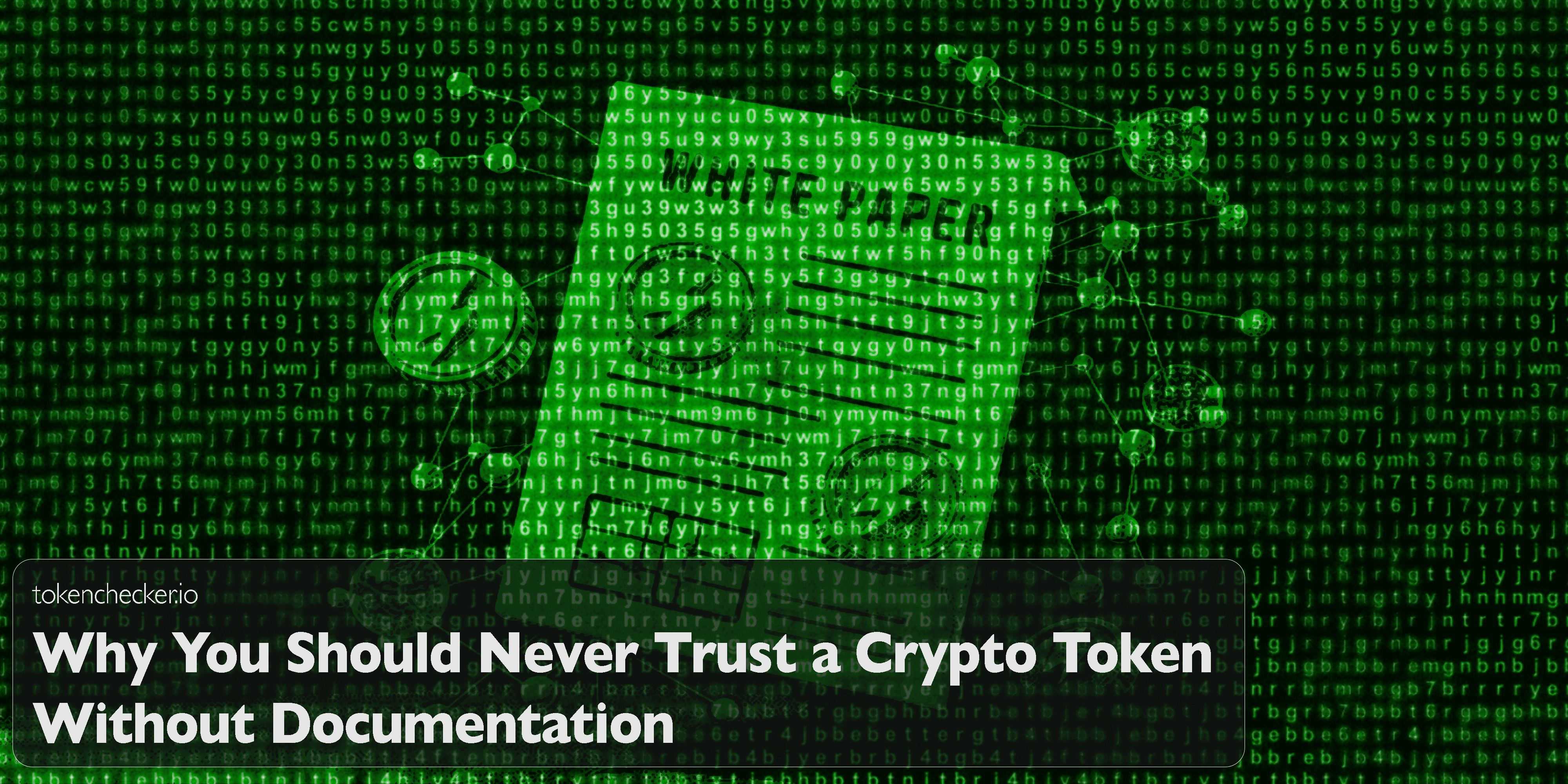
Why You Should Never Trust a Crypto Token Without Documentation
You’d never invest in a startup that has no business plan, no team bios, no roadmap—and refuses to answer basic questions. But somehow in crypto, that same setup happens all the time. Projects with zero documentation still get hype. Some even pump.
Let’s be clear: if a token doesn’t have a whitepaper or real documentation, it’s not just “risky.” It’s a black box of potential fraud. In 2025, with AI-generated fluff everywhere, that lack of transparency is louder than any red flag. It’s a siren.
Here’s what these tokens are hiding, why documentation matters more than ever, and how scammers are using the absence of info to outsmart everyone—including you.
A Whitepaper Isn’t Optional. It’s the Minimum.
In crypto, a whitepaper is the blueprint. It tells you what the project does, how it works, why it exists, and who’s behind it. Without it? You’re investing blind.
Strong documentation should include:
- The project’s purpose and the problem it solves
- How the tech actually works (blockchain, contracts, consensus)
- Tokenomics (supply, utility, emissions, incentives)
- The roadmap and expected milestones
- Team bios, credentials, and contact info
- Security protocols and audit status
- Regulatory stance and disclaimers
- Visuals that help explain complex pieces
If even half of that is missing—or if it’s just marketing fluff—you already have your answer.
No Docs? That’s Not a Startup. That’s a Scam.
The absence of documentation isn’t just lazy. In many cases, it’s intentional.
Scammers know that when you strip away the data, people fall back on hope, hype, and FOMO. The moment there’s nothing to analyze, they can say anything. They can make up roadmaps. Promise insane returns. Invent fake teams. And there’s nothing to fact-check them against.
This is how rug pulls and pump-and-dumps start. They remove the paper trail.
Worse, even if something looks like a whitepaper, it might be AI-generated. Tools like ChatGPT can now spit out a “tech doc” that looks professional but means nothing. That’s why tokenchecker.io now flags fluff documents and checks for AI-injected scam language.
No Paper? Here’s What That Really Means
When there’s no whitepaper:
- There’s no defined problem being solved
- There’s no clear economic model or utility
- You don’t know how the token actually works
- There’s no timeline, team, or measurable plan
- There’s zero accountability if it fails
It also means no real due diligence is even possible. You can’t compare promises to performance. You can’t verify security claims. You can’t ask the right questions because the foundation doesn’t exist.
In traditional finance, that would be a lawsuit waiting to happen. In crypto? It’s Tuesday.
Fake Projects Love the Information Vacuum
Here’s what happens when tokens skip documentation:
- Rug pulls run rampant—especially liquidity scams
- Soft rugs emerge where devs vanish slowly instead of instantly
- Honeypots hide in plain sight: you can buy, but can’t sell
- Fake ICOs pop up with clone sites and copy-paste Telegram groups
- AI-written documents mislead even experienced investors
And since many of these projects operate in unregulated jurisdictions, your money’s gone for good. No refund. No lawsuit. No path back.
Why Regulators Hate These Tokens (And You Should Too)
The SEC, IRS, and FINRA all say the same thing: if a token is undocumented and unregistered, you’re on your own.
There’s no SIPA protection. No FDIC safety net. No regulatory pressure forcing disclosures. That means:
- Your losses can’t be reversed
- You might be unknowingly breaking tax laws
- The team behind the token can disappear with zero consequences
- You’re wide open to identity theft, phishing, and chain-hopping exploits
Even the best crypto experts struggle with tax reporting when whitepapers are missing. For everyday investors, that turns simple mistakes into audit nightmares.
What tokenchecker.io Does Differently
When a project doesn’t provide real documentation, tokenchecker.io steps in with independent analysis.
Here’s what it looks for:
- Missing or vague whitepapers
- AI-generated filler content
- Suspiciously generic roadmaps
- No-code honeypot flags
- Absent team verification
- Unrealistic tokenomics
- Empty GitHubs or ghosted devs
That kind of red flag detection isn’t something you can eyeball. You need a system that’s seen thousands of scams and can see through the silence.
What to Look For Before You Ever Invest
If you’re still tempted to give a no-doc token a chance, use this basic checklist first:
- Can you read a full whitepaper with diagrams, code, and economics?
- Are the team members doxxed and linked to other legit work?
- Is there a roadmap that shows past milestones and future goals?
- Has the smart contract been audited by a third party?
- Is there actual utility or just memes and promises?
If you’re answering “no” to most of these, walk away. Or treat it as pure gambling and size your position accordingly: small.
Final Thoughts
If a token doesn’t have a whitepaper, it doesn’t deserve your trust. Or your money.
Crypto already comes with risk. But undocumented tokens aren’t just high-risk—they’re anti-transparency. They betray the core values crypto was built on: openness, verifiability, trust through code.
That’s why tokenchecker.io flags missing documentation as a critical warning. Because if a project refuses to explain itself—chances are, it’s not worth understanding.